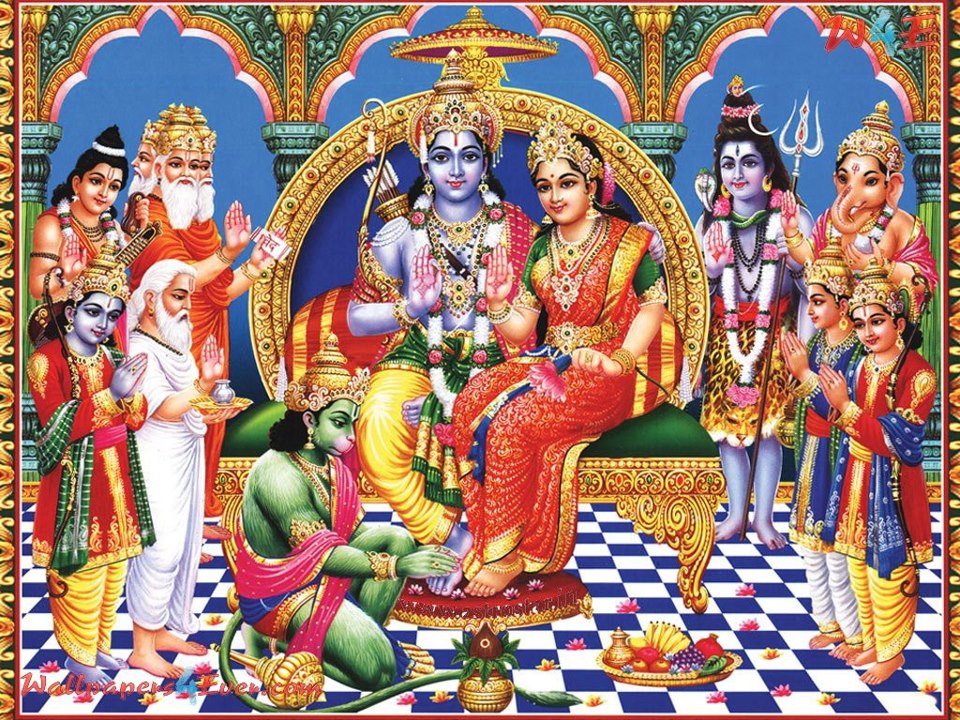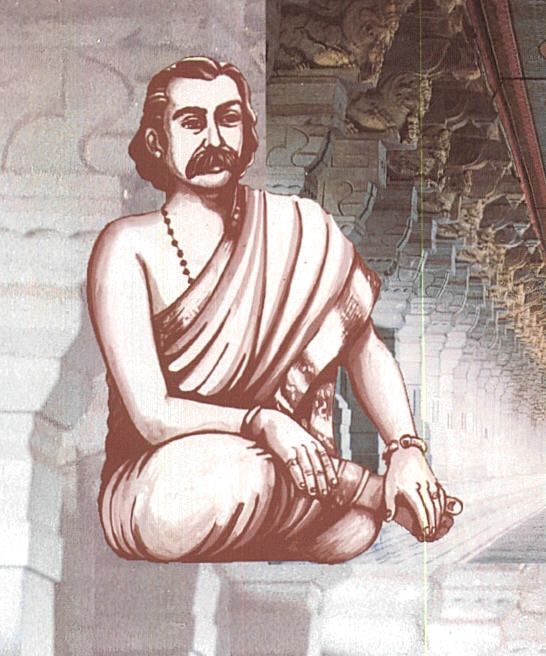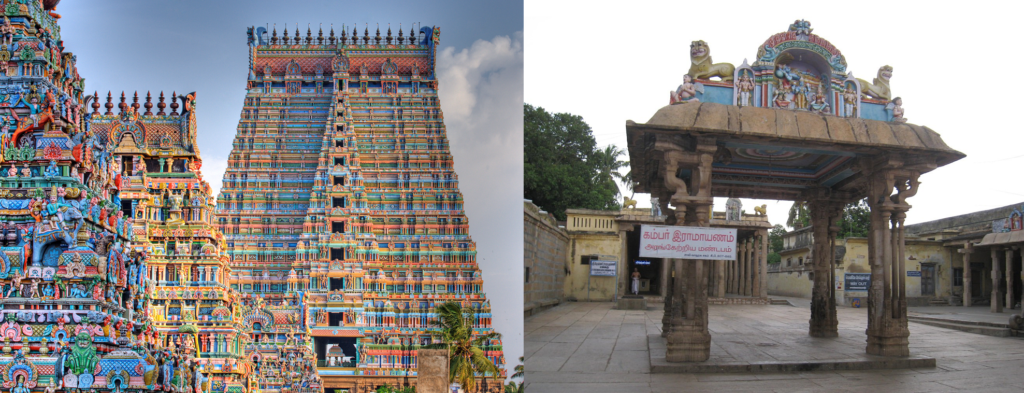Kavichakravarthi Kamban

“As Hanuman guarded the throne, Angada stood with the royal sword in his hand. Bharata held the royal white umbrella duly spread. Lakshmana and Satrughna waved the royal fans. Seeta sat majestically by Rama’s side and the ancestors of charitable Sadayappan gave the crown to Sage Vasishtha who crowned Rama with it”
– Kamba Ramayana

Ramayana – The Journey of Sri Rama, is the oldest epic in human history. It is also revered as a Holy Book by devout Hindus. Sage Valmiki, the author of the original epic in Sanskrit, is hence known as Adikavi (first poet). Following his footsteps, many a great poets throughout Asia have retold the story in many different languages since ancient times. In modern period, all Western languages have atleast one popular translation of this ancient holy epic of India, and that of humankind.
In essence, Ramayana tells the story of Sri Rama, the seventh avatar (incarnation) of the Supreme Lord, Maha Vishnu Himself. Lord Mahavishnu, at the behest of the devas (celestial gods) and sages, descends on Earth as Sri Rama – the son of King Dasaratha of Kosala kingdom and Queen Mother Kausalya to protect the righteous, to destroy the wicked and to re-establish dharma – the rule of law, virtue and peace.
Among the many versions of Ramayana, three of them stand as tall as the Himalayas itself due to their popularity, devotion and poetic beauty:
“Ramayana” by Sage Valmiki (original author) in Sanskrit.
“Ramavataram” by Kavichakravarti Kamban in Tamil (9th Century A.D), and
“Ramacaritamanasa” by Saint Tulsi Das in Hindi (16th Century A.D).
The following is a brief introduction to Kamban, the greatest among the poets of Tamil language.

“Rama walked majestically towards Siva’s bow, putting even the lion, the bull, the golden Meru, and the elephant to shame. With ease and elegance, Rama took the bow which lay on the ground like a big golden mountain…
They just saw Rama taking the bow in his hand and instantly heard the sound of the breaking bow!” – Kavi Kamban
Kamban (Tamil: கம்பர்) was born in the 9th Century in Therazhundur, a village in the culturally rich Tanjavur district in the state of Tamil Nadu in South India. The poet belongs to a family who had Lord Narasimha (another avatar of Lord Mahavishnu, Who emerged from Kamba (pillar) to save the child devotee Prahlada) as their family deity. His devoted parents named his as Kamban.
Kamban was a great scholar of India’s two ancient and rich languages, Sanskrit (Indo-European) and Tamil (Dravidian). The “Ramavataram” of Kamban is an epic of 10,000 odd verses, of 4-lines each. Kamba Ramayana is not a translation of the Sanskrit epic by Adikavi Valmiki, but an original retelling of the story of Sri Rama, as the incarnation of Lord Tirumal (Mahavishnu). The lyrical beauty, brilliant use of rhyme, simile and the astonishing variety of his poetry yet still conforming to the strict classification of verses in classical poems in Tamil language earned him the title, Kavicakravarti (Emperor among poets). He is also known as “Kamba Nattalvar“, as he revived the greatness of Tamil language through his work during the medieval period.

The arangetram (Inagural public rendering) of Kamban’s ‘Ramavataram’ was done at the Great Temple of Srirangam, to an assembly of eminent poets, under the auspices of the philanthropist, Sadayappan of Tiruvennainallur of the Chola Kingdom in the Tamil Country on the day of the Uttara star, in the month of Panguni, in the eight hundred and seventh year of Salivahana saka.
Justice M M Ismail, an erudite Tamil scholar especially in Kamba Ramayana, brings out the uniqueness of Kamban in the following statement: “Kamban sang the story of Rama as of God come down on earth to suffer, chasten, uplift, help and guide humanity. Apart from this difference in the treatment of the hero, there is considerable difference in the poetic form between Valmiki and Kamban. Kamban’s Ramayana is a lyric, while Valmiki’s is an epic. The lyrical sparkle of Kamban and Tulsidas goes well with their constant reminder that Rama is the Supreme Being Himself.”
Kamban’s Ramayana is imbibed with the contemporary Hindu tradition of ‘Bhakthi’ (devotion to divinity), as Lord Rama is portrayed as none other than the Supreme Deity, Lord Vishnu. This established the norm of Temples dedicated to Lord Rama throughout southern India. Even today, many Hindus recite the text of Kamba Ramayana during the Tamil month of Aadi (mid-July to mid-August).
Sri Ram, Jaya Ram, Jaya Jaya Ram!